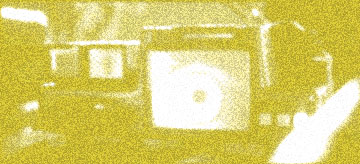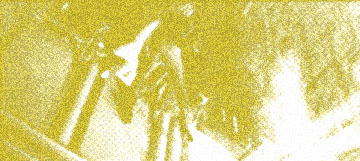


>>
| >> BEGIN TRANSMISSION | . | . | . | . |
>> INFRASTRUCTURE .. OK
>> DATA ............ OK
>> GRAPHICS ........ OK
>> COMMUNICATION ... OK
>> COMPATIBILITY ... VERIFY
| >> LOADING | . | . | . | . |
>> ROBOTS AND MECHANIZED CREATURES
>> JOHN LEE_
| >> BUILDING INDEX | . | . | . | . |
>> INTRODUCTION
>> HUMANITY
>> INTEGRITY
>> SOCIO-POLITICS
>> CONCLUSION
>> PDF COPY
-------------------------
>> //?RBT_MCH/INTRODUCTION
| >> | ROBOTS AND MECHANIZED CREATURES convey a dual condition, alternating between optimism (technological advancement) and dystopia (human subordination, dehumanization). It becomes apparent that a sense of humanity lost is at the centre of the dystopic environments in the course films. Future portrayals - for instance, Blade Runner, Metropolis, Brazil, and Alphaville - convey dystopia through an uneasy tension between man and machine, and are polarized by technological advancement. |
| >> | Other films, including The Cabinet of Dr. Caligari, Leger’s Ballet Mecanique, and A Clockwork Orange, violate the irreplaceability of humanity, stripping away idiosyncrasies until the lines between man and machine are blurred. Robots and mechanized creatures are never explicitly introduced; instead, these films explore ways in which humanity can be manipulated. |
| >> | Thus, from the polarized specificities of the relationship between man and machine evident in futuristic films emerge contempoary socio-cultural implications, including politics, social responsibility, and architecture. |
-------------------------
>> BACK TO TOP
>> CONTINUE TRANSMISSION
-------------------------
>> //?RBT_MCH/HUMANITY/THE FUTURE
| >> | As evidence of technological advancement, robots and mechanized creatures play a key role in future-based films. Essentially, the role of technology is to establish a tension with humankind; the problems and issues that arise from this tension are interesting in that they reflect socio-political and cultural issues relevant to the film's contemporary audience. |
| >> | BLADE RUNNER 1982 |
| >> | In Blade Runner, the plot centers around the insubordination of robotic replicants and questions the social hierarchy of futuristic Los Angeles. The replicants are highly advanced, and have super-human mental and physical capabilities. Only through the Voight-Kampff test, in which a series of emotional questions are asked to the alleged replicant, and their responses and movements (especially the eyes) monitored, is it possible to ensure humanity. Therefore, Blade Runner asserts that it is emotional responses, empathy, and similar human idiosyncrasies that separate humankind from machinekind. |
| >> | //?BladeRunner-64.jpg |
 |
|
| >> | ALPHAVILLE 1965 |
| >> | These differences are fundamental to Godard's Alphaville, in which the populace is subordinate to a gigantic super-computer. Emotion, intuition, and other human faculties are rejected in favour of rationality, logic, and sterility; the Bible, common to many hotel bedside tables in 1965, is replaced by a dictionary – and even the dictionary definitions are replaced and interchanged to further suppress emotions. Tragically, as the film's hero, Lemmy Caution, escapes with Natascha, it becomes clear that the citizens of Alphaville have been completely dependent on the machine's existence. Their terminal 'disorientation' emphasizes their utter dehumanization. |
| >> | //?cap275.jpg |
 |
|
| >> | These films establish a sense of dystopia by manipulating preconceived relationships between man and machine. Humankind is comfortable when it is understood that they are superior to machine, and possess emotional capabilities that distinguish its humanity from machinery. Indeed, such a view would have been comfortable to audiences for these films. However, by endowing the replicants in Blade Runner with beyond-human abilities and by making the Alpha 60 computer superior in Alphaville, the traditional man-machine hierarchy is reversed. Likewise, the highly contemporary portrayal of the dystopic technocracy in Alphaville is a deliberate social commentary by Godard, the director. Through the anachronism and subversive symbolism pervasive in Alphaville, Godard questions the values of society in an increasingly technocratic and technologically advanced world. Similarly, the new Nexus-6 replicants in Blade Runner have gained emotions and empathy, making them question their slave-like role and fight for the answers to these questions. When Roy saves Deckard from falling off of a rooftop at the film's conclusion, this unexpected act of empathy causes Deckard – and the audience – to question his own humanity. Roy has defeated the last obstacle between man and machine, and a traditional (or contemporary) system of values becomes invalid. |
| >> | //?BladeRunner-112.jpg |
 |
-------------------------
>> BACK TO TOP